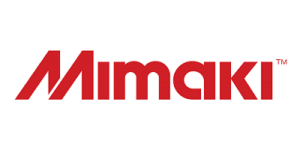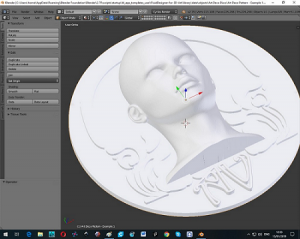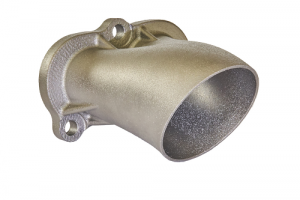US Air Force produces on-demand surgical retractor using 3D printing
Lucie Trejtnarová and Fillamentum create biodegradable 3D printed sandals
INTERVIEW: WASP launches open tool for 3D printing orthopedics
Michigan Tech’s Joshua Pearce launches free open-source 3D printing course
3D Printing News Briefs: January 26, 2019
We’re starting with business first in this edition of 3D Printing News Briefs, and then moving on to design software and 3D printing materials. Mimaki USA is getting ready for the grand opening of its LA Technology Center next month, and a Sartomer executive has been elected to the RadTech board of directors. A startup will soon be offering a new cryptotoken for additive manufacturing, and the 3D Printing Association will cease operations. A simplified Blender user interface will make 3D printing easier, and Protolabs is introducing some new materials for its DMLS 3D printing.
Mimaki USA Opening Los Angeles Technology Center
 Not long after Japanese company Mimaki Engineering launched its first full-color inkjet printer in 1996, it established Mimaki USA, an operating entity that manufactures digital printing and cutting products around the world. Mimaki USA began preparing to enter the 3D printing market in 2015, and installed its first 3DUJ-553 3D printer in the Americas last winter. Now, it’s preparing for the grand opening of its Los Angeles Technology Center next month.
Not long after Japanese company Mimaki Engineering launched its first full-color inkjet printer in 1996, it established Mimaki USA, an operating entity that manufactures digital printing and cutting products around the world. Mimaki USA began preparing to enter the 3D printing market in 2015, and installed its first 3DUJ-553 3D printer in the Americas last winter. Now, it’s preparing for the grand opening of its Los Angeles Technology Center next month.
The event will take place on Friday, February 22nd from 10 am to 4 pm at the new technology center, located at 150 West Walnut Street, Suite 100, in Gardena, California. Attendees will have the chance to meet the company’s industry experts, along with Mimaki Engineering Chairman Akira Ikeda, Mimaki USA President Naoya Kawagoshi, and the regional sales managers from all seven technology centers. Live demonstrations of the company’s printers and cutters will commence after lunch, and attendees will also enjoy tours of the center and a traditional Japanese Kagami Biraki ceremony.
Sartomer’s Jeffrey Klang Elected to RadTech Board
 Sartomer, an Arkema Inc. business unit and developer of UV/EB curing technology products, has announced that Jeffrey Klang, its global R&D Directer – 3D Printing for Sartomer, has been elected to the board of directors for RadTech, a nonprofit trade association that promotes the use and development of UV and EB processing technologies. Sartomer is part of Arkema’s commercial platform dedicated to additive manufacturing, and Klang, an inventor with over 20 US patents who was previously the manager for Sartomer’s Coatings Platform R&D, has played an important role in helping the company develop and commercialize many of its oligomers and monomers.
Sartomer, an Arkema Inc. business unit and developer of UV/EB curing technology products, has announced that Jeffrey Klang, its global R&D Directer – 3D Printing for Sartomer, has been elected to the board of directors for RadTech, a nonprofit trade association that promotes the use and development of UV and EB processing technologies. Sartomer is part of Arkema’s commercial platform dedicated to additive manufacturing, and Klang, an inventor with over 20 US patents who was previously the manager for Sartomer’s Coatings Platform R&D, has played an important role in helping the company develop and commercialize many of its oligomers and monomers.
“Jeff’s strong leadership of Sartomer’s innovation and R&D initiatives supports the evolving needs of UV and EB processors in diverse industries, such as 3D printing, coatings, graphic arts, adhesives, sealants, elastomers and electronics. His deep understanding of UV/EB technologies, markets and regulatory requirements will make him an asset to RadTech’s board of directors,” said Kenny Messer, the President of Sartomer Americas.
erecoin Startup to Offer New Cryptocurrency for Additive Manufacturing
 A startup called erecoin, which is a product of CAE lab GmbH, is on a mission to change the world of 3D printing by combining the benefits of blockchain with future demands of the ever expanding AM community. After a year of preparation, erecoin has completed the registration of its ICO (Initial Coin Offering), and people can begin purchasing its new cryptotoken on the Ethereum public trading infrastructure starting February 18, 2019.
A startup called erecoin, which is a product of CAE lab GmbH, is on a mission to change the world of 3D printing by combining the benefits of blockchain with future demands of the ever expanding AM community. After a year of preparation, erecoin has completed the registration of its ICO (Initial Coin Offering), and people can begin purchasing its new cryptotoken on the Ethereum public trading infrastructure starting February 18, 2019.
“We are glad and proud that we, as a young startup, managed to master the necessary steps for a functioning utility token,” said erecoin Co-Founder Konstantin Steinmüller. “At the same time we are curious to see how the community supports our crowdfunding.”
Steinmüller told fellow co-founder Jürgen Kleinfelder about a concrete 3D prototype optimization project that CAE-lab was working on, which is how the idea to combine blockchain and 3D printing came about. The startup’s goal is to get rid of many of the uncertainties in the AM process chain, and blockchain can be used to conclude smart contracts to solve legal and technical questions in the industry. Because data exchange is integrated into the blockchain, a secure and efficient relationship of trust is created between the parties in the chain. Time will only tell if erecoin can achieve its goal and help accelerate additive manufacturing or if it is just hopeful hype or an inefficient way to do something no one needs.
3D Printing Association Closes
 The 3D Printing Association (3DPA) is the member-funded, global trade association for the 3D printing industry in Europe. In 2015, the 3DPA moved its base of operations to The Hague in order to develop an independent professional B2B platform for European AM industries. As the 3D printing landscape continues to grow and mature, the association has decided to permanently terminate its operations beginning February 1st, 2019. But this isn’t necessarily bad news – in fact, 3DPA is glad that CECIMO, the European Association of the Machine Tool Industries and related Manufacturing Technologies, has been able to set itself up as a leading 3D printing advocate in Europe.
The 3D Printing Association (3DPA) is the member-funded, global trade association for the 3D printing industry in Europe. In 2015, the 3DPA moved its base of operations to The Hague in order to develop an independent professional B2B platform for European AM industries. As the 3D printing landscape continues to grow and mature, the association has decided to permanently terminate its operations beginning February 1st, 2019. But this isn’t necessarily bad news – in fact, 3DPA is glad that CECIMO, the European Association of the Machine Tool Industries and related Manufacturing Technologies, has been able to set itself up as a leading 3D printing advocate in Europe.
“3DPA’s goal, derived from an online survey and a business summit at the beginning of 2015, was to provide an independent B2B platform for standardisation, education and industry advocacy. Although there are still important steps to be taken to reaching full maturity, meanwhile the landscape has become less fragmented and volatile, and additive manufacturing has been embraced as strategic pillar by well-established umbrella organisations in sectors like manufacturing, automotive, aerospace and medical appliances,” said 3DPA’s Managing Director Jules Lejeune.
“CECIMO for example, is the long standing European Association of the Machine Tool Industries and related Manufacturing Technologies. It represents some 350 leading AM companies that play a significant role in a wide variety of critical sections of the AM value chain – from the supply of all different types of raw materials for additive manufacturing and the development of software, to machine manufacturing and post-processing. In recent years, it has successfully claimed a leading role in bringing relevant topics to the regulatory agenda in Brussels.”
Simplified Blender User Interface
 While the free 3D design and modeling software application Blender is very handy, it’s only helpful if you’re able to learn how to use it, and by some accounts, that is not an easy feat. But, now there’s a new version of Blender that includes a simplified user interface (UI) that’s so easy, even kids as young as 10 years old can figure out how to work it. FluidDesigner has used a new Blender 2.79 feature called Application Templates, which makes it possible to add a library of parametric smart objects and reduce the menu structure and interface.
While the free 3D design and modeling software application Blender is very handy, it’s only helpful if you’re able to learn how to use it, and by some accounts, that is not an easy feat. But, now there’s a new version of Blender that includes a simplified user interface (UI) that’s so easy, even kids as young as 10 years old can figure out how to work it. FluidDesigner has used a new Blender 2.79 feature called Application Templates, which makes it possible to add a library of parametric smart objects and reduce the menu structure and interface.
“Application Templates allows for the simplification of the UI but with the whole power of Blender in the background. You can access nearly all of Blender commands from the Spacebar or by switching panels. Another way to look at it is that it is an Application Template is an almighty Add-On,” Paul Summers from FluidDesigner said in an email.
“All objects are either Nurbs or Bezier (2D) Curves for ease of editing. Nurbs objects in particular can be joined together to create personalised jewellery or artwork quickly and simply.
“There is no need to go to the trouble of joining objects using Boolean modifiers, instead you simply overlap Nurbs objects and then run the *.obj file through Netfabb Basic to repair any issues created with Blender objects. With its much simplified interface, created by Andrew Peel, FluidDesigner for 3D Printing with its parametric smart objects (Nurbs curves) is suitable for even the novice user. The current version runs under Blender 2.79 and can be accessed from the File menu.”
Protolabs Adds New DMLS Materials
 Protolabs, a digital manufacturing source for custom prototypes and low-volume production parts, has announced that it is enhancing its direct metal laser sintering (DMLS) offering with two new materials. Nickel-based Inconel 718 is a heat- and corrosion-resistant alloy with high creep, fatigue, rupture, and tensile strength, is able to create a thick, stable, passivating oxide layer at high temperatures, which protects it from attack – making it an ideal material for aerospace and other heavy industries for manufacturing gas turbine parts, jet engines, and rocket engine components.
Protolabs, a digital manufacturing source for custom prototypes and low-volume production parts, has announced that it is enhancing its direct metal laser sintering (DMLS) offering with two new materials. Nickel-based Inconel 718 is a heat- and corrosion-resistant alloy with high creep, fatigue, rupture, and tensile strength, is able to create a thick, stable, passivating oxide layer at high temperatures, which protects it from attack – making it an ideal material for aerospace and other heavy industries for manufacturing gas turbine parts, jet engines, and rocket engine components.
Maraging Steel 1.2709 is a pre-alloyed, ultra-high strength steel in the form of fine powder. It’s easy to heat treat with a simple thermal age-hardening process, and offers high hardness and high-temperature resistance, which makes it perfect for high performance industrial and engineering parts and tooling applications. These two new Protolabs materials additions help reinforce the company’s enduring reputation as one that can offer an impressive range of metals.
Discuss these stories and other 3D printing topics at 3DPrintBoard.com or share your thoughts in the Facebook comments below.
3D Printing News Sliced: Rocket Lab, David Bowie, Resident Evil 2
3D Printing News Briefs: December 30, 2018
In this week’s abbreviated 3D Printing News Briefs, we’ve got a story on a new type of 3D printing that makes it easy to 3D print small objects, and a distinguished professor gives a TEDx talk about the importance of interdisciplinary research. Wrapping things up, we’ve got a video about an amazing 3D printed 1/6 scale vehicle model.
Shrinking 3D Printer

A schematic of the Alice in Wonderland image that was etched and shrunk in the 3D shrinking printer. [Image: Ed Boyden et al.]
A team of researchers from MIT, Harvard, and the Pfizer Internal Medicine Research Unit in Cambridge, Massachusetts recently published a paper, titled “3D nanofabrication by volumetric deposition and controlled shrinkage of patterned scaffolds,” in the Science journal about their innovative new method of shrinking 3D printing, which makes it easy to 3D print very small objects. A technique called implosion fabrication 3D prints an object, then shrinks it down to the required size. The shrinking 3D printer can work with different materials, such as quantum dots, metals, and DNA, and can also fabricate complicated shapes like microscopic linked chains as well.
MIT researcher Ed Boyden, one of the co-authors of the paper, developed the shrinking 3D printing method by thinking of reversing a process where brain tissue is expanded so it’s possible to see its finer structure. The team found that they could shrink a structure by about 8,000 times in multiple tests, and proved its viability by etching a structure of Alice in Wonderland and shrinking it down to 50 nanometers from 1 cubic millimeter. The research team believes that their shrinking 3D printers could be used to make small, high resolution optical lenses for driving cars, though the possibilities for this technology are practically endless.
TEDx on Interdisciplinary Research
 Distinguished Professor Dietmar W. Hutmacher, the director of the Centre for Regenerative Medicine and the Australian Research Council Training Centre in Additive Biomanufacturing at the Queensland University of Technology (QUT), is an inventor, educator, biomedical engineer, and intellectual property creator, and has been responsible for multiple breakthroughs in bioprinting. He recently gave a talk at a TEDx event about the importance of interdisciplinary research as it applies to regenerative medicine, which works to help patients with damaged tissues due to disease or accident. Prof Hutmacher himself has converted a bone tissue engineering concept all the way from the lab to clinical application involving in vitro experiments, preclinical studies, and clinical trials, and in the TEDx talk discussed how “one walks the talk to orchestrate an interdisciplinary team” where everyone can share knowledge and naturally learn the important required competencies. He presented a patient case of a young father’s long bone defect, where his interdisciplinary research team was made up of clinicians, engineers, material scientists, molecular and cell biologists, polymer chemists, and veterinary surgeons.
Distinguished Professor Dietmar W. Hutmacher, the director of the Centre for Regenerative Medicine and the Australian Research Council Training Centre in Additive Biomanufacturing at the Queensland University of Technology (QUT), is an inventor, educator, biomedical engineer, and intellectual property creator, and has been responsible for multiple breakthroughs in bioprinting. He recently gave a talk at a TEDx event about the importance of interdisciplinary research as it applies to regenerative medicine, which works to help patients with damaged tissues due to disease or accident. Prof Hutmacher himself has converted a bone tissue engineering concept all the way from the lab to clinical application involving in vitro experiments, preclinical studies, and clinical trials, and in the TEDx talk discussed how “one walks the talk to orchestrate an interdisciplinary team” where everyone can share knowledge and naturally learn the important required competencies. He presented a patient case of a young father’s long bone defect, where his interdisciplinary research team was made up of clinicians, engineers, material scientists, molecular and cell biologists, polymer chemists, and veterinary surgeons.
“In regenerative medicine there is a great move to introduce interdisciplinarity in the research programs, as well as in the scholarships,” DProf Hutmacher said in the YouTube video. “However, most of the teams are rather doing multidisciplinary research, which does not lead to what we have done in the past moving a bone tissue engineering concept into the clinic.”
To see the rest of DProf Hutmacher’s TEDx talk, check out the video below:
1/6 Scale Model of 1961 Dodge D100
 Over the years, we’ve seen some pretty cool 3D printed vehicle models that have been both scaled up and scaled down, but I think this one takes the cake: a highly detailed, 1/6 scale model of a 1961 Dodge D100 truck, created by maker Konstantin Bogdanov. Including filming, the project took him a year to complete, and Bogdanov writes that the YouTube video he created is more of a project diary, though it can also be used as a tutorial.
Over the years, we’ve seen some pretty cool 3D printed vehicle models that have been both scaled up and scaled down, but I think this one takes the cake: a highly detailed, 1/6 scale model of a 1961 Dodge D100 truck, created by maker Konstantin Bogdanov. Including filming, the project took him a year to complete, and Bogdanov writes that the YouTube video he created is more of a project diary, though it can also be used as a tutorial.
Using a blueprint of the Dodge, Bogdanov modeled the cab of the truck in Blender and 3D printed it out of polyamide; additional materials used to build the model include aluminum foil, Styrene rods, plywood, artificial leather, and acrylic paint. His 44 minute YouTube video shows some of the modeling work, and then moves on to the nitty gritty details of building all the separate pieces of the truck model, from the doors and fenders to the chassis and grille, and finally assembling everything before painting and weathering the model. Plus, at about the 2:06 minute mark, Bogdanov’s adorable cat makes its first of multiple appearances in the video! If you’re interested in making your own 1/6 scale model of the 1961 Dodge D100 truck, you can download the STL files for both the four motor mount and the tractor wheels. Check out the video for more details.
Discuss these stories and other 3D printing topics at 3DPrintBoard.com or share your thoughts in the Facebook comments below.
